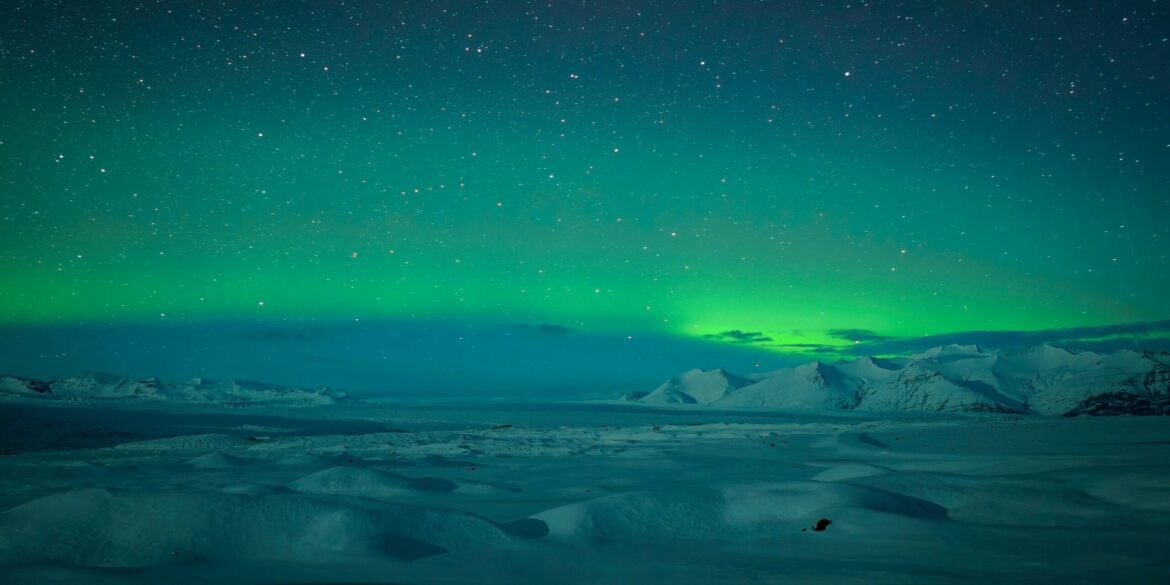On the night of August 8–9, 2025, millions of Americans were treated to a rare and spectacular view of the Northern Lights stretching far beyond their usual Arctic and sub-Arctic boundaries. Residents across 18 U.S. states—from Alaska and Washington to as far south as Iowa, South Dakota, and even parts of the Midwest—witnessed shimmering waves of green, purple, and red light dancing across the sky. The breathtaking display was the result of an intense geomagnetic storm triggered by a powerful coronal mass ejection (CME) from the Sun combined with a high-speed stream of solar wind.
The CME, a massive eruption of charged particles and magnetic fields from the Sun’s surface, had been detected several days earlier by space weather monitoring stations. Forecasters at the National Oceanic and Atmospheric Administration’s Space Weather Prediction Center warned that when the CME struck Earth’s magnetosphere, it could generate storm conditions strong enough to shift the auroral oval hundreds of miles southward. The event reached G2, or moderate storm status, on the geomagnetic scale, with Kp index readings climbing to 5 and 6 during peak activity. These levels are known to bring auroral visibility to regions that rarely see them, even during the height of solar cycles.
Skywatchers were advised to seek dark, open areas away from city lights and to look north for the best viewing conditions. In many locations, the auroras appeared as faint, ghostly glows at first, only to erupt into brilliant, rippling curtains of color as the night progressed. The most vibrant displays occurred in the early morning hours between 2 a.m. and 5 a.m. Eastern Time, although precise timing varied depending on when the solar storm’s peak impact reached different parts of the country.
The phenomenon coincided with the full Sturgeon Moon on August 9, which, while beautiful in its own right, added extra challenge for viewing the auroras. To avoid the moonlight’s glare, experienced observers recommended positioning oneself with the Moon at one’s back or using natural terrain such as hills or treelines to block its brightness.
For many, this was a once-in-a-lifetime experience. Social media quickly filled with photographs capturing glowing green arcs over farmlands, purples and pinks reflected in lakes, and towering beams streaking upward into the summer night. Amateur astronomers and professional astrophotographers alike documented the event, with some calling it the most widespread and vivid auroral display in North America in over a decade.
Scientists note that this unusual reach of the Northern Lights was made possible by heightened solar activity during the current solar maximum. The Sun’s 11-year cycle of activity is expected to peak in late 2025 or early 2026, and during such periods, powerful solar flares and CMEs are more frequent. These events increase the likelihood of auroras being visible in mid-latitude regions, making this year one of the most promising for aurora watchers in recent memory.
The spectacle also served as a vivid reminder of the powerful forces at work between the Sun and Earth. CMEs travel millions of miles across space before colliding with Earth’s magnetic field, where their charged particles excite gases in the upper atmosphere, creating the glowing ribbons of light known as the aurora borealis. While beautiful, these solar storms can also disrupt satellite communications, navigation systems, and even electrical grids, though no major disruptions were reported during this particular event.
Communities across the northern states embraced the occasion, with some hosting impromptu viewing gatherings in parks, fields, and campgrounds. For those who missed it, experts say the ongoing solar maximum means there may be more opportunities to see the auroras in the coming months—though predicting exactly when and where they will appear remains as elusive as the lights themselves.

